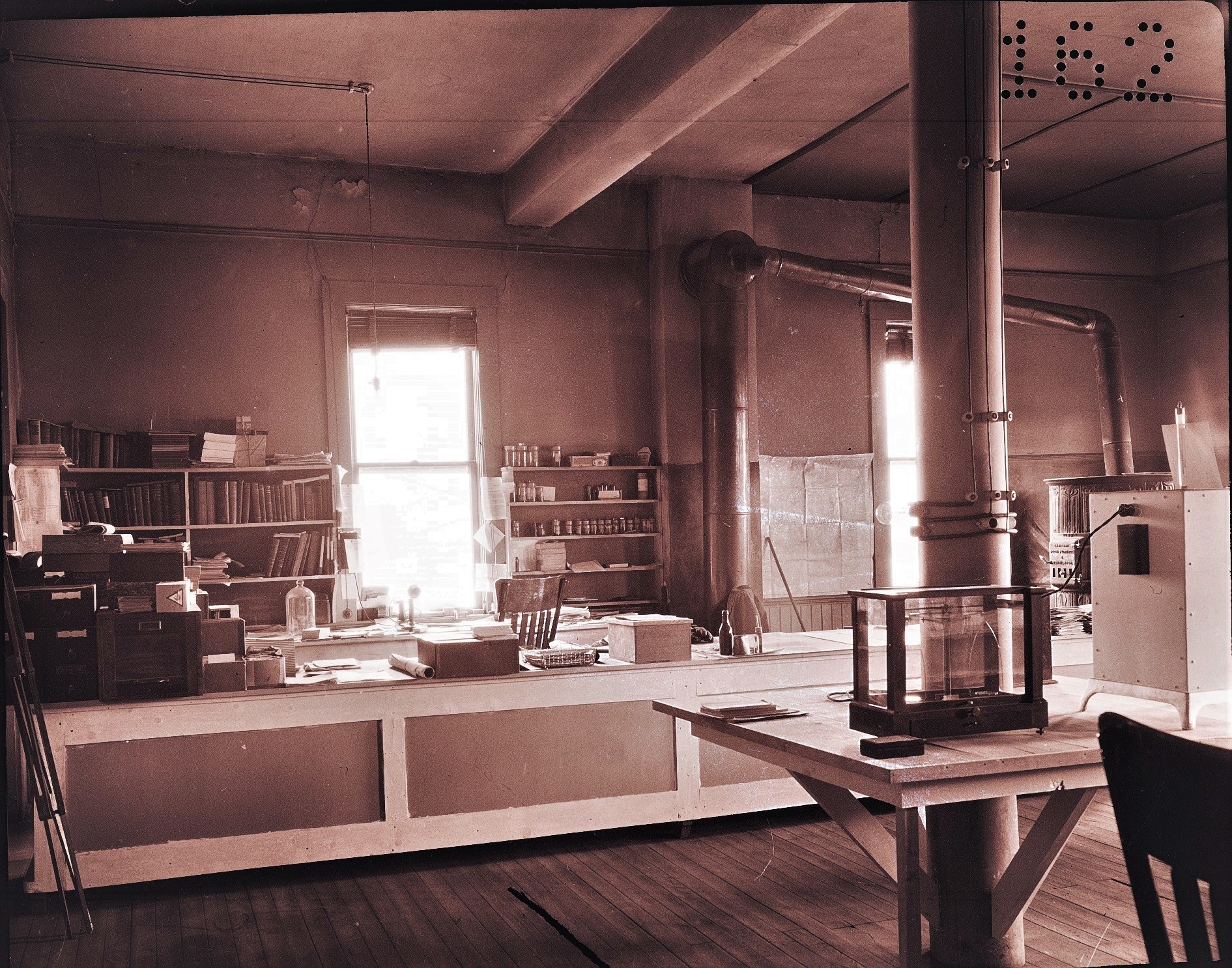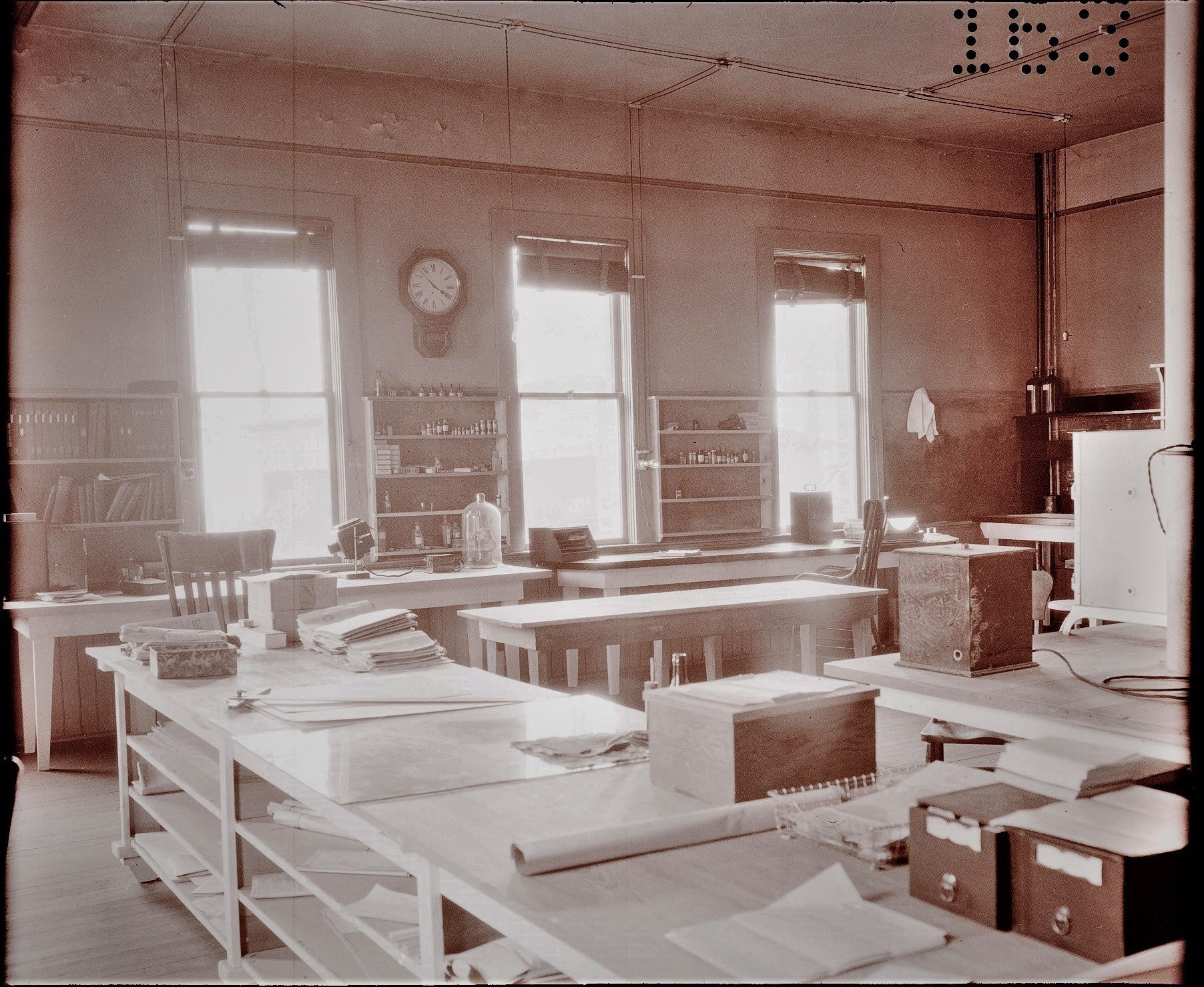...
| Span | ||
|---|---|---|
| ||
Image: Rocky Mountain Laboratories, 471 |
| Div | ||||||||||||||||||||
|---|---|---|---|---|---|---|---|---|---|---|---|---|---|---|---|---|---|---|---|---|
| ||||||||||||||||||||
|
...
The far corner of the office/laboratory, circa 1921. Rows of chemicals stood on shelves above the map of Rocky Mountain spotted fever cases. Next to the glass bell jar instrument cover were likely metal canisters containing pipettes. The white unit on the counter-top is either a double-walled hot air sterilizer or an oven for drying glassware. Next to that a copper retort is connected by its neck to a zinc condenser. The liquid in the retort was heated and the condensation ran into the condenser, where it was cooled to make a refined liquid. This was an old-fashioned way to do laboratory distillations even in the 1920s, but it produced a good amount of liquid. The Canyon Creek Schoolhouse laboratory would have had to fill out special paperwork for the U.S. Treasury certifying why they were using it; such distillation set-ups were commonly used as stills by bootleggers during the years of Prohibition.
| Span | ||
|---|---|---|
| ||
Image: Rocky Mountain Laboratories, 484 |
| Dive | ||||||||||||||||||||||||
|---|---|---|---|---|---|---|---|---|---|---|---|---|---|---|---|---|---|---|---|---|---|---|---|---|
| ||||||||||||||||||||||||
|
...






